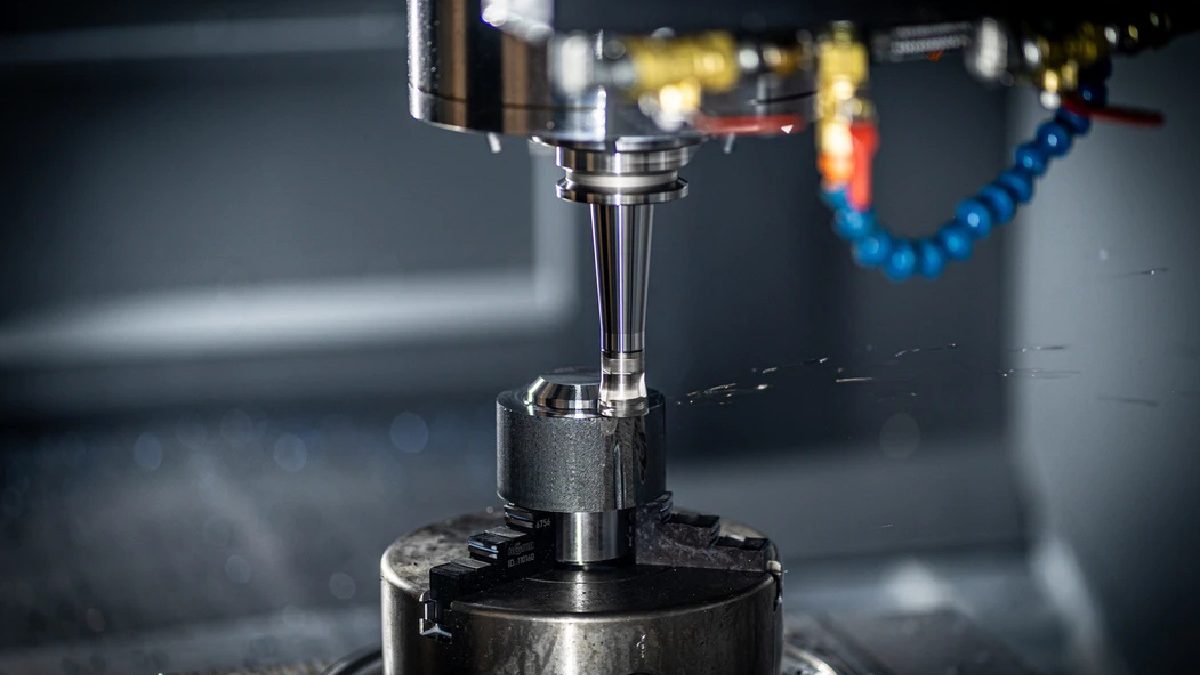The machining of parts is done with computers capable of controlling the machinery. And with the emergence of CNC machinery, it was possible to automate this process thanks to the ease of control by a computer program with minimal human intervention.
Its use expands to assembly operations, inspection, work on metal sheets, among others. It can be applied to any field. CNC or numerical control machining is used more than anything in metal or aluminum machining processes such as drilling or milling. Thanks to its automation capabilities, manufacturing proceeds at an accelerated rate and produces more accurate results.
Table of Contents
How did CNC Machinery Come About?
The CNC machinery emerged in 1940 thanks to the American engineer John T. Parsons’ work, which used perforated card system position coordinates to control a machine center. Eight years later, this system was presented to the US Air Force to be sponsored by the Massachusetts Institute of Technology (MIT).
By 1952, MIT created the prototype of a CNC machining machine and, shortly after, it was introduced in the factories of machine tools for the production of metal parts, while they continued with their research to provide the programmer with the means needed to communicate part machining instructions to machinery in an easier way.
Types of Machines that Work with CNC
Among the most common CNC machines are milling machines, grinding machines, and lathes. Milling machines are automatic cutting machines capable of working even with metals. Lathes are automated tools that rotate on their axis to shape the material.
Meanwhile, R ectificadoras use abrasive disks for machining by abrasion on metal or plastic. These machines are easy to program and are used in CNC machining projects that do not need precision.
Numerical control machining technology contains information related to the position where the machine parts are to be placed. Most of these tools are currently connected to a computer network where they receive all the instructions.
CNC Machining Applications
Thanks to CNC machinery automation, its use was extended to different industrial sectors such as wind power, aeronautics, and even rail. CNC milling machines mold landing gear and fuselage components.
Many industries turn to the CNC machining center to combine different operations on the same machine. Of course, it must meet the needs of roughing, semi-finishing, and part finishing operations using multiple heads with automatic change.
Main Advantages of CNC Machining
- Improved automation compared to numerical control without a computer. This means that human intervention can be reduced or even eliminated at each step. However, manual action always takes place for specific tasks, such as repair and prototyping. That allows for higher production simultaneously since CNC machines are capable of running 24 hours a day.
- Greater precision and consistency of the pieces obtained. Today’s CNC machines have astonishing precision and repeatability specifications, with two, ten, or a thousand identical workpieces easily achievable once the program is verified. That was critical in mass production.
- Hex Coupling Nuts have an elongated hexagonal shape, and are designed to connect two pieces of threaded material, such as threaded rod. Right hand thread.
- Greater flexibility, being machine tools controlled by a computer program, carrying out new machining that only contains a few small changes with respect to a previous job requires loading a saved project, making specific changes, and saving it separately, as in any other software. This allows quick changes and adaptation to any part and eliminate most prototypes.
- More excellent safety, as there is minimal interaction of the operator with the machine in most of the movements. Previously, when intervening in actions such as changing heads, loading material, stopping a movement, etc., there were more chances of having accidents.
Main challenges of CNC machining
High operating costs:
Although CNC machines reduce the number of manual workers required in a manufacturing plant, they are more expensive to operate. However, the costs associated with running the machines are gradually decreasing. You can now find many reasonably priced maintenance tools. For example, a simple Google search for “oscilloscopes for sale” will yield many good choices.
Training need:
initially, the CNC machining generalization led to high unemployment, as manual workers’ need was reduced. However, with proper training, this system creates new specialized employment opportunities as it requires CNC machine tool operators, programmers, maintenance personnel, machine tool manufacturing engineers and technicians, and trainers to teach its operation.
Conclusion:
In the above article, we have discussed a few vital points in CNC machining, and I hope you find this article informative. Please give us your feedback in our comment section.
Related posts
Recent Posts
Streamline Logistics with Freight Forwarding ERP Software
Freight Forwarding ERP Software: The international trade exists on the basis of the smooth flow of goods. However, it is…
Quantum-Safe Cryptography for Crypto Security
Cryptography for Crypto Security – In the ever-evolving landscape of cybersecurity, the emergence of quantum computing presents a formidable challenge….



